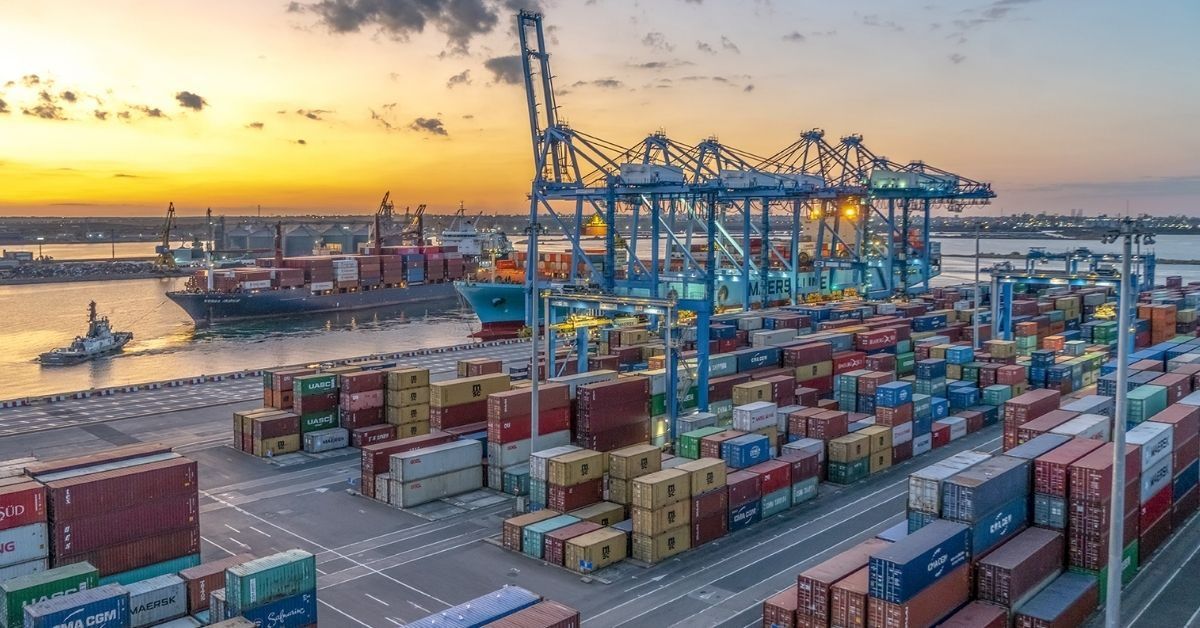Ukrainian Black Sea ports were cut off from world trade after the Russian-Ukrainian war began on February 24, 2022, causing a rippling effect on regional logistics. The cargo analysis bureau Informall BG, based in Odessa, Ukraine, attempted to determine the key elements that contributed to the congestion in the Romanian port of Constanta.
Thousands of import containers planned for Ukraine had to be emptied in the port of Constanta, the closest seaport to Ukraine, while others were unloaded at the ports of Bulgaria, Turkey, Greece, and Israel due to Russian Navy forces’ blockade of Ukrainian seaports.
The rapid increase of container traffic in transit destined to Ukraine overloaded the container yards of Constanta slowing down the terminal operation. According to Informall BG estimations, the total container transit volume of Constanta port in Q1 2022 has tripled compared to Q1 2021. Our estimations show that around 7,000 TEU in transit were transported to Ukraine during March 2022 only. As terminal officials reported, Constanta container yard utilization was up to 90% at the end of March 2022 while gradually decreasing to 80% in the following weeks of May.
The increased dwell time for both domestic and transit containers caused terminal congestion in Constanta. Dwell time for Ukrainian import containers increased significantly since the mid of March 2022 (up to two weeks) as importers are struggling to arrange transportation amid a war conflict which contributes to the congestion at the Constanta container terminals.
Truckers are also struggling with picking up Ukrainian containers from the terminals. Informall BG spoke to regional transport stakeholders finding out that the waiting time for trucks to gate-in to Constanta terminals is currently two to five days due to the congestion.
Not well-established customs operational (and paperwork) procedures for cargoes in-transit in Constanta have also contributed to delays for containers moving to/from Ukraine.
As shipping lines are trying to minimize risks related to the container equipment entering Ukraine, they introduced various restrictions in March 2022 adding to the mentioned paperwork issues. Depending on a shipping line operator and their risk tolerance, restrictions may vary from a simple extra insurance premium or a cash deposit of up to US$5,000 per container to a full ban on transporting container equipment into Ukraine.
Delivery of containerized cargoes straight to Ukraine became challenging (in some cases impossible due to the shipping line restrictions) prompting additional operations with cargo such as restuffing into bonded trucks in Romania or Moldova slowing down overall container turnover and increasing the transportation costs.
According to the DP World Constanta, the container terminal operator is seeking to ease up pressure on the operations team and stimulate Ukrainian importers to pick up their cargoes in a quick manner. DP World urges, “in order to decongest the terminal and maximize vessel operations it is mandatory to reduce the container storage time in the yard”.
As a result, the Constanta container terminal introduced new guidance for both shipping lines and freight forwarders moving containers via the port. After the message was communicated among terminal customers, a temporary congestion fee was introduced for cargoes (containers) dwelling more than seven days from the date of arrival. Such fees are expected to remain in place until the terminal is decongested and back to normal operation. As per DP World Constanta’s recent notice release, customers are asked to declare the imports destined for Ukraine in advance in order to store them separately in the yard as customs clearance tends to take longer.
Major delays slowed terminal operation and high congestion fees prompted some Ukrainian freight forwarders to shift from Constanta container terminals to the neighboring port of Varna, Bulgaria mainly for import cargoes. While the port of Varna is an extra 150 km trip from Constanta, the extra cost of travelling to Varna will be compensated by affordable stevedore services, cheaper cargo handling charges, availability of warehouse space and faster [not congested] terminal operation. Similar to Romania, the Bulgarian government has also reviewed and temporarily simplified cross-border rules for Ukrainian exporters/importers in order to speed up the transit of cargo.
It is expected that Ukrainian import volumes will be slowly recovering as Ukraine has started the gradual restoration of liberated territories. Humanitarian aid, first need household and consumer goods, building materials [for construction] are tend to arrive into containers meaning the port of Constanta will remain one of the major container hubs for Ukrainian import and export shipments until Ukrainian seaports are blocked.
Informall BG forecast for Q2 2022 in the container terminal of Constanta:
According to Informall BG estimations, laden domestic container turnover in Q2 2022 in Romania is expected to grow by 2-3% only, while total transit container volume will grow by 5-7% as a slight decongestion of the Romanian terminals is expected in the second half of Q2 2022 and on.
According to the Liner Operators ratings for 1Q 2022 based on the laden container turnover [without transshipment], domestic laden container volume in the port of Constanta decreased by 1,61%. In total 2M Alliance [MSC, MAERSK] controls 37,26% of Constanta laden container turnover in Q1 2022, while OCEAN Alliance [OOCL, CMA CGM, COSCO, EVERGREEN] provided 39,85% of laden volume during the same period.








